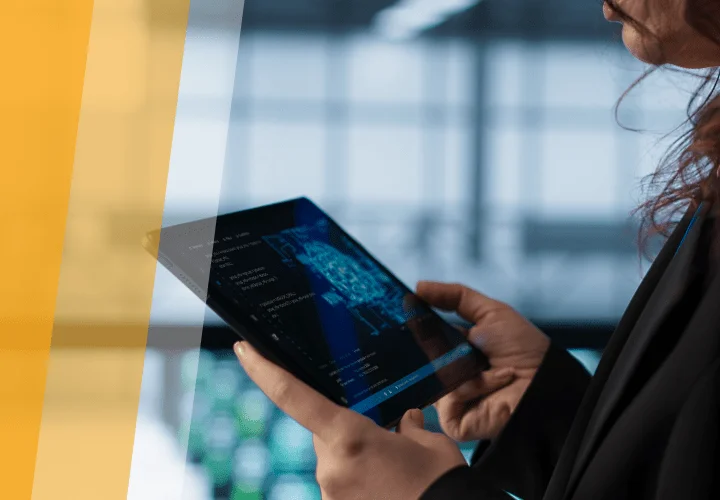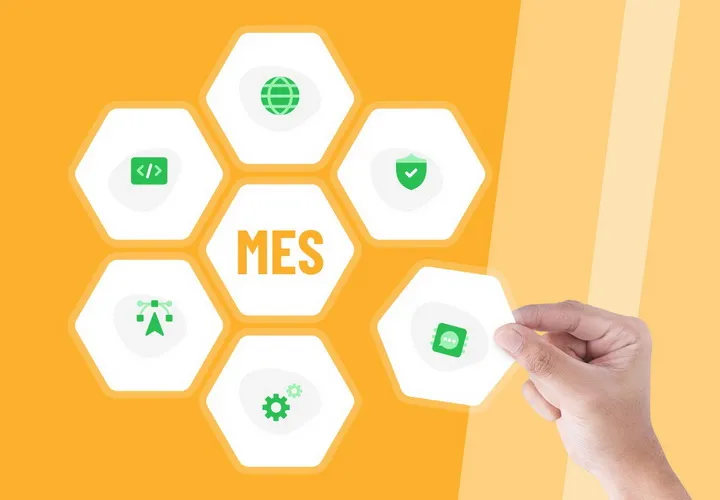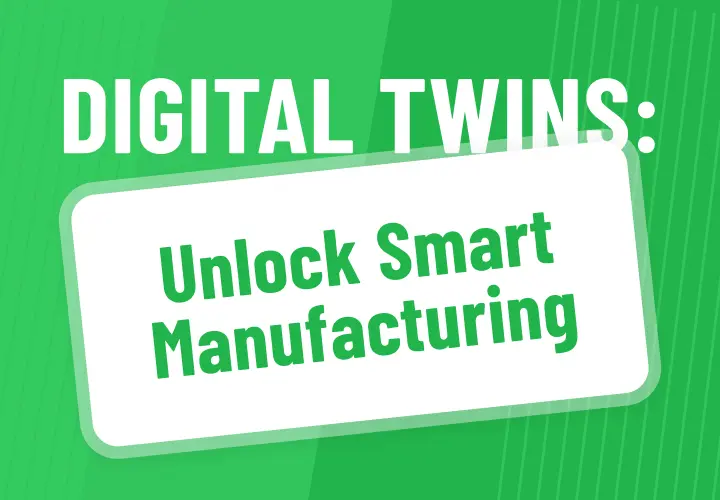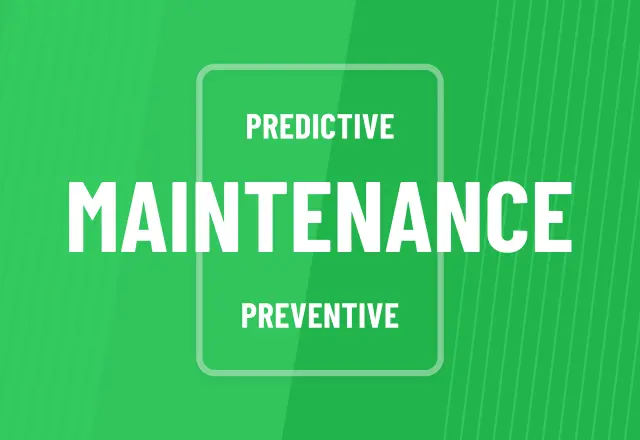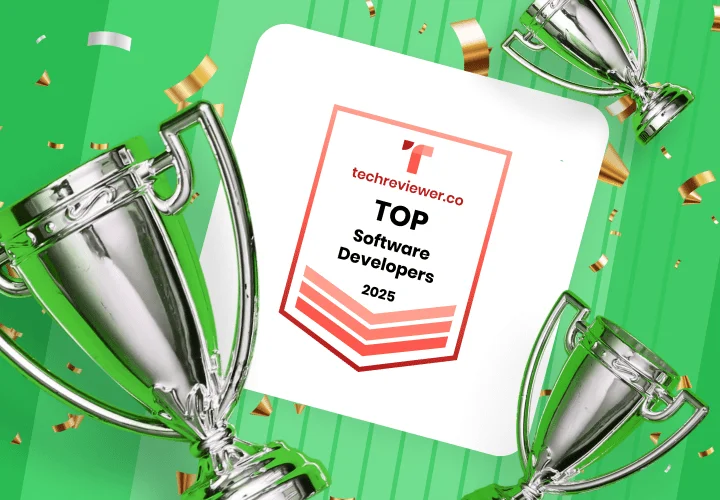Retail of the Future: A Strategic Guide to Hyper-Transformation (2025-2030)
Table of contents
- Key Challenges and Strategic Imperatives for Retailers (2025-2030)
- Safety and Hygiene as the Foundation of Trust
- Deep Digital Transformation
- Building Hyper-Personalized Loyalty
- Elastic Logistics Management
- Adapting to New Consumer Habits
- Technology Trends Reshaping Retail (2025-2030)
- AI-Driven Hyper-Personalization: Beyond Basic Recommendations
- Immersive Shopping: AR, VR, and the Metaverse
- Autonomous Systems and Robot Assistants: From Warehouse to Customer
- Seamless Omnichannel: A Unified Customer Journey
- Blockchain and AI for Supply Chain Transparency and Sustainability
- Challenges and Risks of Technology Implementation: Practical Considerations
- Our Expertise: Driving Retail Innovation Forward
- Solutions for the Modern Retailer
- Smart Grocery App: Redefining In-Store Experience
- AI for Hyper-Personalized Shopping: Understanding Every Customer
- AR Shopping App: Bringing Products to Life
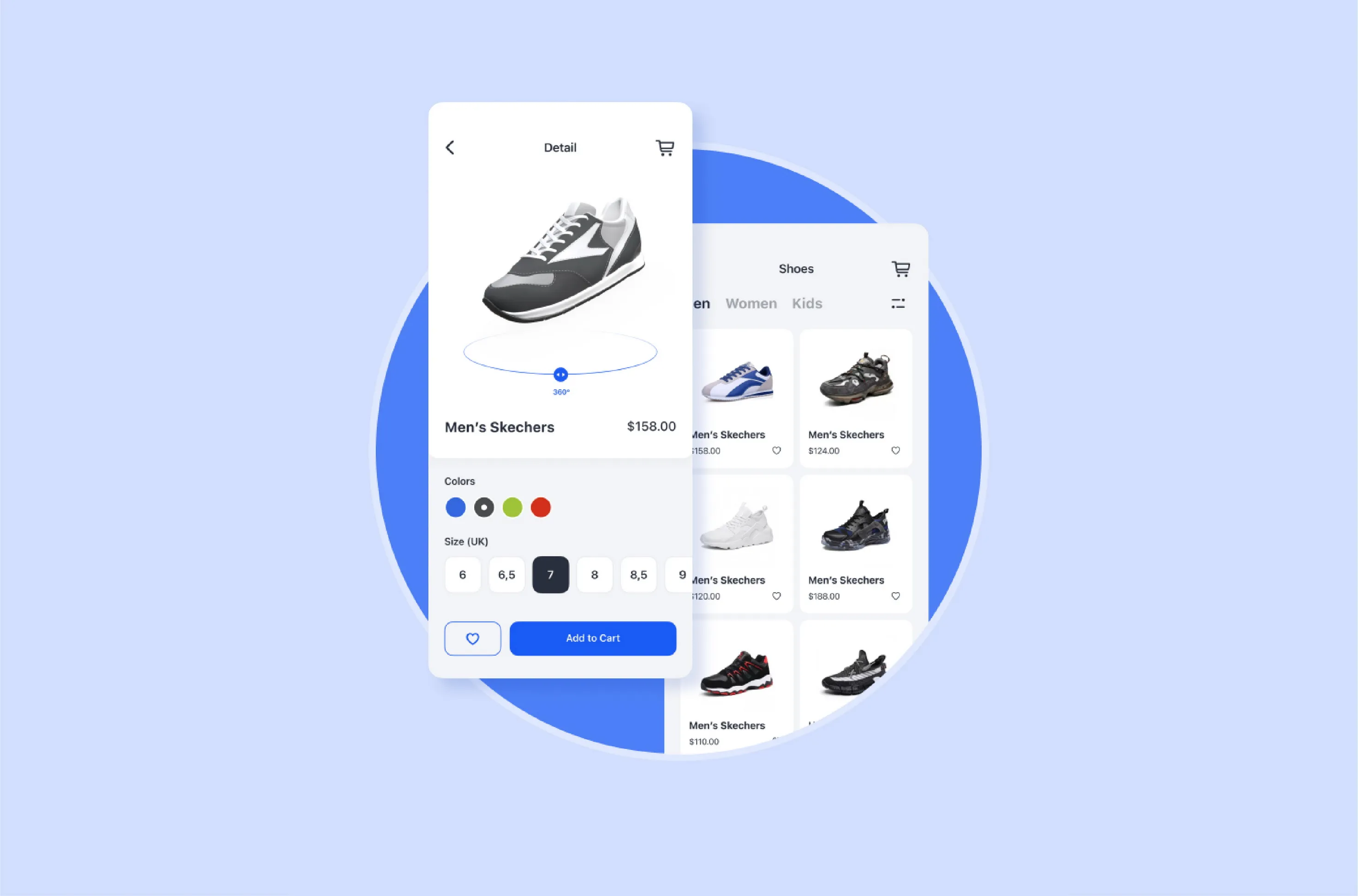
In 2021, the retail world was forced to accelerate its digital transformation. Online shopping then became not just a convenience, but a necessity. Now, in 2025, we're seeing this dynamic not only persist but transform. The focus is shifting from simply having an online store to a deep synergy of digital and physical channels, creating a hyper-personalized customer experience, and building sustainable, ethical supply chains. Retailers are no longer merely reacting to change; they must proactively shape their future using advanced technologies.
Key Challenges and Strategic Imperatives for Retailers (2025-2030)
To remain competitive in the next five years, retailers must not just adapt, but lead in the following areas:
Safety and Hygiene as the Foundation of Trust
This is no longer a temporary measure but a permanent standard. Customers expect not only cleanliness but also contactless interactions, efficient crowd management, and even transparency about air quality in stores.
Practical Application: Implement smart access control systems to regulate visitor numbers, use UV sterilizers for equipment, and introduce transparent cleaning protocols, informing customers about them.
Deep Digital Transformation
This goes beyond E-commerce. It's about digitizing all internal processes - from inventory and logistics management to supplier and employee interactions.
Practical Application: Invest in cloud-based ERP systems, use digital twins for warehouse optimization, and implement AI-driven marketing automation (MA) tools.
Building Hyper-Personalized Loyalty
Loyalty in 2025 is built on an individualized approach and anticipating needs. Customers expect you to know their preferences, offer relevant content, and create unique experiences.
Practical Application: Implement predictive analytics to identify customer preferences, create dynamic pricing models and real-time personalized recommendations. Consider blockchain-based loyalty programs for secure data storage and unique benefits.
Elastic Logistics Management
The ability to rapidly scale logistics up or down (for both online and offline orders) is critical in a constantly changing demand landscape.
Practical Application: Develop a network of micro-fulfillment centers within city limits, explore drone delivery for the "last mile" in specific regions, and implement AI-driven Transportation Management Systems (TMS) to optimize routes.
Adapting to New Consumer Habits
This includes the rising demand for fast delivery (15-30 minutes), product subscriptions, customization, and high ethical standards from brands.
Practical Application: Develop flexible delivery models, collaborate with local courier services, implement subscription systems for essential goods, and offer product customization options through online configurators or AR apps.
Technology Trends Reshaping Retail (2025-2030)
By 2025, technologies are no longer just adaptive tools but driving forces for creating fundamentally new business models and consumer experiences.
AI-Driven Hyper-Personalization: Beyond Basic Recommendations
Hyper-personalization uses Artificial Intelligence (AI), Machine Learning (ML), and big data analytics to create a unique, dynamically changing experience for each customer in real time.
What it offers:
- Dynamic Pricing and Promotions: AI analyzes customer behavior, competitors, and external factors (e.g., weather) to offer optimal prices and personalized discounts at a specific moment.
- Predictive Analytics: AI predicts customer needs, for example, when a product might run out, and proactively suggests reordering or subscription.
- Generative AI (GenAI) for Content: GenAI automatically creates unique product descriptions, ad copy, and images for individualized marketing campaigns, drastically reducing time-to-market.
- Advanced Chatbots and Voice Assistants: These AI systems conduct complex dialogues, understand context and customer emotions, helping with product selection and purchases, mimicking a highly skilled sales assistant.
- In-Store Personalization: Using loyalty program data (with customer consent), AI can inform staff about customer preferences as they enter the store, allowing for more relevant assistance.
The true power of AI in retail isn't just about analyzing past purchases; it's about predictive and proactive real-time behavioral analytics. We're moving from 'customers who bought this also bought' to 'you'll need this because...' This level of customer understanding demands significant investment in data quality and ethical approaches, but it transforms 'incidental' sales into long-term, trusting relationships. - Eric Johnson, Marketing Expert, Emerline
Immersive Shopping: AR, VR, and the Metaverse
Augmented Reality (AR), Virtual Reality (VR), and the Metaverse expand the shopping experience, blurring the lines between the physical and digital worlds.
What it offers:
- AR Try-Ons and Visualization: Customers can "try on" clothes, shoes, makeup, or "place" furniture in their homes using AR apps, significantly reducing return rates.
- Virtual Showrooms and 3D Stores: Brands create full 3D models of their stores or unique virtual spaces accessible via VR headsets or web browsers.
- The Metaverse as Shopping and Social Hubs: Brands launch "stores" in metaverses where users can buy digital items (NFTs), participate in virtual events, and purchase physical goods delivered to the real world.
- Interactive Storefronts: Physical storefronts become interactive, allowing passersby to engage with virtual models via their smartphones.
Autonomous Systems and Robot Assistants: From Warehouse to Customer
Robots and autonomous systems automate routine and complex tasks, increasing efficiency and improving the customer experience.
What it offers:
- Robots for Inventory and Fulfillment: Autonomous mobile robots scan inventory, identify missing items, and assist with order picking, accelerating processing.
- Automated Checkouts and Staff-Less Stores: Technologies like Amazon Go are becoming standard. Customers simply pick items, and payment is automatically deducted from their account upon leaving.
- Robot Assistants: Advanced robots answer customer questions, help locate products, and even process payments.
- Last-Mile Delivery Robots: Autonomous ground robots and drones deliver goods directly to customer doors, reducing logistics costs and increasing speed.
Seamless Omnichannel: A Unified Customer Journey
Customers expect a single, seamless experience interacting with a brand, regardless of the channel - whether online, mobile app, social media, or physical store.
What it offers:
- Unified Customer Profile: All customer interactions (online purchases, Browse history, support inquiries) are aggregated into a single profile for consistent service.
- Next-Gen Click & Collect: Beyond simple in-store pickup, automated pickup points (parcel lockers), robot-assisted retrieval, and "smart" fitting rooms are being implemented.
- Offline as an Extension of Online: Physical stores are equipped with interactive screens to browse the entire online catalog and order for home delivery, while online purchases offer an option to "reserve for in-store try-on."
Social Media and Messenger Integration: Direct purchases and customer support interactions become standard directly within familiar social media apps.
Blockchain and AI for Supply Chain Transparency and Sustainability
Blockchain creates immutable records for every stage of a product's lifecycle, and AI analyzes this data to optimize the entire supply chain with ethical and environmental considerations.
What it offers:
- Farm-to-Shelf Traceability: Customers can scan a QR code on a product to get full information about its origin, production conditions, logistical journey, and environmental footprint.
- Inventory Optimization and Waste Reduction: AI, by analyzing blockchain data on product movement and demand, accurately forecasts product needs, minimizing overproduction and waste.
- Smart Contracts: Automate payments to suppliers or carriers upon meeting predefined conditions (e.g., successful delivery).
- Ethical and Sustainability Verification: Blockchain serves as a reliable source to verify claims like "child-labor-free" or "carbon-neutral," increasing consumer trust.
By 2025, sustainability and ethics are no longer 'nice-to-haves' - they're core consumer expectations. Blockchain and AI provide retailers with not just tools for logistics optimization, but the ability to prove their commitment to transparency and social responsibility. This builds not only trust but also long-term brand value in the eyes of customers, for whom every product is a story, not just a thing. - Eric Johnson, Marketin Expert, Emerline
Challenges and Risks of Technology Implementation: Practical Considerations
Implementing these technologies comes with inherent risks that must be carefully considered:
- Cost and ROI: Advanced technologies require significant investment. It's crucial to conduct thorough Return on Investment (ROI) analyses and start with pilot projects to validate hypotheses.
- System Integration: The biggest challenge is seamless integration of new systems with existing IT infrastructure. Disparate systems can create more problems than they solve.
- Data Security and Privacy: Collecting and processing large volumes of personal data demands strict compliance with regulations (GDPR, CCPA, etc.) and the highest level of cybersecurity. Data breaches can lead to reputational and financial losses.
- Cultural and Organizational Change: Implementing new technologies often requires retraining staff, re-engineering business processes, and fostering a new corporate culture focused on data and innovation.
- Technological Obsolescence: The pace of technological development is rapid. Choose flexible, scalable solutions that can be adapted and updated.
- "Technology for Technology's Sake": The most common mistake is implementing technology merely because it's "trendy," without a clear understanding of the business problem it solves. Every investment should be justified by specific goals and expected outcomes.
Our Expertise: Driving Retail Innovation Forward
At Emerline, we're not just observing retail trends; we're actively shaping them. We deliver cutting-edge solutions that empower our clients to differentiate themselves and thrive in today's fiercely competitive and rapidly evolving market. Here's a glimpse into some of the transformative projects we're ready to implement for you right now.
Solutions for the Modern Retailer
Smart Grocery App: Redefining In-Store Experience
Our custom grocery app transforms the traditional shopping trip into a seamless, information-rich, and efficient experience. It's more than just an app; it's your customer's personal shopping assistant.
Key Features:
- Instant Product Insights: Customers can scan QR codes on products to instantly access comprehensive information, including price, manufacturer details, ingredients, shelf life, and current promotions.
- Integrated Payments & Loyalty: The app supports secure online payments via Apple Pay, Google Pay, and standard debit/credit cards. It's also fully integrated with your existing loyalty programs and discount cards, ensuring a unified customer experience.
- Seamless Customer Tracking: Deep integrations with your other retail systems allow for effective tracking of customer information, leading to increased engagement and brand loyalty.
How it Works:
- We develop a robust application with QR code scanning capabilities and integrate it with leading payment gateways like Apple Pay, Google Pay, and major card networks.
- Customers scan QR codes on products to view detailed information. If they decide to purchase, they simply tap "add" to place the item in their in-app shopping cart.
- Once done, customers proceed to a mobile checkout terminal. Here, they can independently (or with merchant assistance) verify their selections and complete their payment directly within the app.
- An instant digital receipt is then delivered straight to their app, eliminating paper waste and enhancing convenience.
In today's highly competitive retail landscape, brands are increasingly adopting tech-driven solutions to achieve fast, safe, and eco-friendly sales. By embracing a hybrid shopping model (combining online convenience with in-store accessibility), you can create an ultimate customer journey that not only boosts sales but also aligns with eco-conscious values by ditching paper receipts.
AI for Hyper-Personalized Shopping: Understanding Every Customer
Our AI and Machine Learning-powered solution provides advanced analytics on customer behavior, enabling you to deliver truly personalized services, whether online or in-store. This means hitting your customers with the right message, at the right time, in the right place, significantly boosting sales potential.
Leverage Advanced Analytics For:
- Dynamic Product Categorization: Intelligently organize your product offerings based on real-time data.
- Personalized Communications: Craft tailored welcome messages and product offerings that resonate individually.
- Adaptive Online Navigation: Customize your online store's layout based on user demographics or Browse history.
- Insightful Customer Review Analysis: Extract valuable insights from customer feedback to improve product lines and refine target group suggestions.
- Dialogue-Driven Retail: Engage customers through smart chatbots and voice-controlled services, expertly developed by Emerline's team.
- Targeted Email Marketing: Deliver highly relevant content to individual customers, maximizing engagement.
Business Benefits:
Our solution enables cross-channel personalization and unifies customer insights. This empowers you to stay ahead of the competition, win customer loyalty, optimize your marketing spend, and significantly improve your ROI by creating seamless, ultra-personalized customer experiences.
AR Shopping App: Bringing Products to Life

We develop mobile retail applications enhanced with AR features, offering users a near-reality experience for smart and easy shopping. The ability to visualize and digitally examine an item without leaving the comfort of home significantly reduces product return rates. This solution also proved crucial for retaining existing customers and attracting new ones, a critical challenge exacerbated during recent global events.
Our AR/VR Expertise Covers:
- Immersive 3D Virtual Stores
- Engaging 360-Degree Product Views
- Realistic Virtual Fitting Rooms
- Dynamic Virtual Showrooms
- Intuitive Product Customization Tools
- Enhanced Digital Catalogs and E-commerce Experiences
Brands that were early adopters of AR technology have consistently reported a significant uplift in sales over several years. Our AR shopping app solution is designed to bring your products to life, improving the immersive customer experience, boosting buyer confidence, and minimizing physical contact – all accessible anytime, anywhere, using just a smartphone.
Conclusion: Your Strategy for the Future of Retail
Between 2025 and 2030, retail will become a battleground for loyalty, convenience, and ethics. Brands that can effectively leverage AI for hyper-personalization, AR/VR for immersive experiences, robots for automation, and blockchain for transparency, while integrating all channels into a seamless omnichannel system, will emerge as market leaders.
This is not just about "being online." It's about profoundly transforming every aspect of customer interaction and optimizing all internal processes. Retailers must not just implement technology, but rethink their strategy, place the customer at the center of everything they do, and build a flexible, sustainable, and technologically advanced operating model.
Are you ready to innovate your retail business? We will be glad to help you in accomplishing all the technology-related goals you set for your company, so contact us to discuss your project at any time!
Updated on Jul 4, 2025
